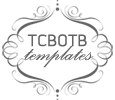We made it! What an amazing unit that was! The kids impressed us with their passion to learn new information and how they could connect the "dots of history" from book to book! We just finished up our Historical Fiction unit in Reader's Workshop. You can read about how we launched it HERE.
This unit has been so much fun! We loved meeting with the book clubs each day. To help manage our time in Reader's Workshop, we used a rotation system for this unit ONLY. Now, we are not "centers" teachers. That being said, in a book club unit, kids will talk FOREVER if you let them! Not that that is entirely a bad thing, we wanted to make sure they still had time for independent/choice time during this unit. Due to this, we created three, 15-minute rotations to support this work. This allowed for book clubs to meet every day. It also limited the noise level in the room to not have every club meet at the same time! :) Below is an example of a daily rotation chart:
This was made in a simple Google Slide Presentation. We had a different slide for each day of the week...why, you might ask? Because we met with groups on different days. You might notice the letters in the book club rotation are black and some are red. The red letters are the groups that meet with an adult that day. We are fortunate to have 3-4 adults in our classroom during our Reader's Workshop block. This allows us to have much smaller groups to provide much more tailored support. Some groups meet with us every day. Some groups meet with us every other day. And a few group only met with us twice per week. It was all based on the individual needs of our students. You might also notice that Group B meets with an adult for two rotations every day. They are our neediest ELL readers that benefited from extra vocabulary and graphic organizer support each day.
Topics we tackled in this unit included: Character development and tracking, Theme development, Power struggles, Secondary Characters, Literary point of view, Character Perspective, and even Connecting nonfiction topics to our historical fiction texts. Kids created double timelines to show where their books fit within the actual historical timeline.
Kids tracked their thinking in multiple ways throughout the unit. We provided them with a packet "template" that had various ideas, etc. They could house their sticky notes in there and find helpful graphic organizers. Some groups chose to use it daily. Other groups created their own way of tracking their ideas. Some through Google Keep, others through Google Slides, and even a few through Google Docs. We allowed them to choose the best way to document that met the needs of their groups/individual learning styles.
Again, we also utilized Google Forms as a formative assessment check-in system. About every week and a half, we sent out a new Google Form that targeted a skill we had been learning about. This allowed kids to have time to come across a part in their book(s) where this might be applicable. So often, when we teach a new skill, kids aren't at a perfect point in their books to apply it. This gives you that "guarantee room" to have had it come up!
 |
| A sample of one of the Google Forms we used. |
The nice thing about Google Forms, is that we set it up to have every weeks' responses go to the SAME Google spreadsheet! This allowed us to view our unit in one glance. It also allowed us to score the responses right in the spreadsheet using a simple 4,3,2,1 system. This let us sort them lowest to highest (or vs. versa), and immediately pull strategy groups or have immediate 1-on-1 reading conferences with kids to address needs!
We always give kids multiple days to complete the form, as well. Due to this, we encourage our kids to type a "draft" in a doc first. If they don't finish in one day, they can continue the next. If they try to type it in the Google Form directly first and don't finish, as soon as they close their computer, they lose their work! Word of caution to prevent tears/frustration! :)
To wrap up our unit, in addition to the Paper Pencil Teacher's College assessment we use, we give kids the opportunity to show their learning in any way they would like to using a Learning Model style. Now, this was the first literacy Learning Model that our students completed. The format is very similar to our Math Learning Models, but definitely requires more typing! I started it off by providing every kiddo with a copy of this GOOGLE DOC:
I also shared with them my own example that I made using emaze.

We went over the expectations on the rubric with them, answered questions, then the kids then got to work! I have to say, we were super impressed with their final products! Here are a few kid examples:
This was such a fun unit! We had a blast, and so did the kids! How do you teach Historical Fiction? We'd love to learn from you!
Happy Teaching,












